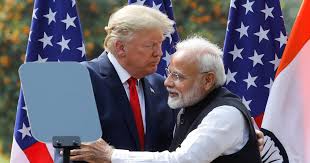Jangam: Reliving Indian Exodus from Burma during Second World War - Lakhs died
Corona forced us all in. After doing a few things here and
there I realized it was difficult to pass time quarantined in a flat with five
other members of my family without doing something creative. After a while
everything becomes so boring. It was then that I started reading the book "Jangam: A forgotten Exodus in which
Thousands died" published by my wife for Vitasta Publishing. I had
tried to read the book earlier but the hectic routine did not allow me to read
beyond a few pages.
I decided to figure out if reading would interest me. As I
read a few pages I got engrossed deep in the story and each day I picked
up the book I was already hooked to the valiant story of migrant Indian
workers who had to flee Burma for life during the Second World War. They were
scared of being chased and killed by Japanese soldiers. Even when they lived
community existence with local Burmese they were identified as enemies of
Burmese nationalism. If they managed to escape
the Japanese, local Burmese youth who had become rebel for new Burmese
regeneration would locate and kill them.
Most of them were poor and labourers and depended on
cultivating lands of landlords- Indians or Burmese. They lived under illusion
that they had no enmity with local Burmese and hence they should be spared.
After all some were born there since their parents had migrated under British
in search of better pastures. One such farmer was Ramgobinda whose father had
chosen Manku, a tiny hamlet away from mainstream population. He did not know
where in India his parents lived. That he too would be forced to leave with his
family that comprised his 60 plus mother, a male child Thanu and his pregnant
wife Lacchmi.
He tried his best to reason with local Burmese village
headman but to no avails. Finally a group of local Indians decided to runaway
before the Japanese arrived. The escape was facilitated in initial stage by
village headman's younger son Nungnao who knew the rebels. Such was the hatred
for foreigners that the rebels kill Nungnao when they came to know that Nungnao
had bribed local boatmen to ferry fleeing Indians cross river Irrawady.
Imagine a group of more than a dozen people having to walk
with all the way through dangerous mountains and ravines, jungles infested with
leeches and mosquitoes, dangerous animals and snakes with nothing to defend
themselves. Worst they did not know the way and had to discover that on way. They
did not know when or if at all they would reach their destination. Soon they
had nothing to eat and their only hope was they might get some provision at the
next village. When they reached the army camp at next village, they discovered
it was already deserted with no food left anywhere.
Pregnant Lacchmi got labour and they were lucky that two
priests had joined the group midway. But she and another traveller were unable
to walk. Somehow help came in from deserting army. They had place for only
three people. Lacchmi, Ballabh and another lady got the lift. Rest kept
walking. On the way they saw dead bodies strewn all along the way. Either
hunger or hazardous way or the pan of the journey had taken the tolls. The
entire team was depressed and wondered if at all they would reach their
destination. But the desire to live- life force kept them moving.
Ramgobinda's son Thanu fell ill. The priest gives him
tablets of Quinine from his pocket and he recovered. When they were about to
reach their destination the secure military camp close to Assam, Thanu fell ill
all over again- very ill and exhausted. It was their fortune that Anglo-Burmese
girl Ma-Pu had joined them on way from another village after her
benefactors died. She tended Thanu and ensured that he was alive. Thanu got
treatment of seasoned Doctor and tender care of Ma-Pu and started recovering. His
father Ramgobinda lost his mental balance after failing to locate his wife who
was sent through the army jeep. The Jeep had met with an accident and none knew
if Lacchmi was alive.
When the priest finally located Lacchmi at a refugee camp
she was found to be mentally unstable and residing in a makeshift asylum. Lacchmi's
infant son too had survived and was under care of the hospital. Thanu failed to
recognise Lacchmi who had got sores, unkept hairs and swollen face . Ramgobinda
was unstable too. Ma-Pu joint the camp medical service to tender to the injured.
She discovered love life in Chinti who had been following her during the
journey but was failing to express his love for her.
The book documents the plight of Lakhs who collapsed on the
way and lakhs who managed to escape and reach safety. The longing for live, the
hatred during war when neighbours become enemies and the resultant loss of
life. The Japanese forays into Burma and their successes one after the other
and the plight of the British have also been documented.
The images are powerful. The author recreates Burma in all
its might and beauty. The Burmese rural life is reflected well. The reader
becomes a part of the fleeing Indians and others and feels their agony and
desperation. Many a time it appears that death would be better deliverance. But
the life-force keeps them moving albeit slowly till some of them reach safety.
The book won the Sahitya Academy Award
posthumously in 1984. The original title was in Assamese. Its English
translation by Oklahama based English Professor, Mr Amit R Baishya, came in
2018. This is a must book to understand conflict and life during times of such
conflicts for poor people. It took me four days to complete the book.


Comments
Post a Comment